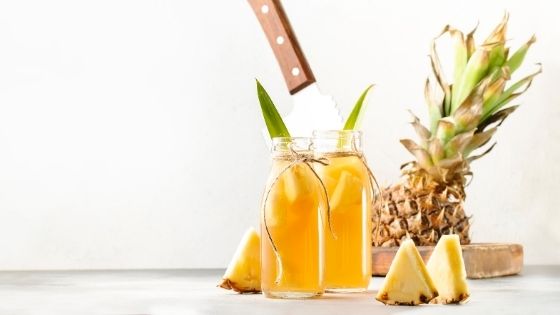Tepache is a staple drink among the Mexican that has found its way throughout all corners of the world. Save for its fizzy effervescence feel, this pineapple brew offers numerous tastes to choose from.
Its sweet lemonade flavor can be your perfect choice to start your day! On the other hand, the yeasty beer-like after-taste can be your ideal bet when looking to beat off your evening. But have you ever wondered what makes its history? Read on to find when and where it was first made and how it has evolved to be a premium choice of a drink it is today.
The Origin
Tepache is native to the people of Nahua, indigenes of central Mexico. This drink has a deep history tracing back to pre-Columbian Mexico. Not only that, but Mayans from Central Mexico also fermented the bubbly drink, especially during traditional ceremonies and initiations. The drink existed decades ago when even Columbus was yet to arrive in the Americas. This means the bubbly drink was many people’s favorite, even during ancient times.
The word “Tepache” was coined from the Nahuatl word “TepiaTL” which is also made of two other words, “TEPITL” and “ATL.” TEPITL means tender corn, while ATL means water.Tepache, therefore, refers to a bubbly drink that was made by fermenting corn using water. The corn was used as a base in the ancient recipe. However, current versions are made with pineapple as the base.
How Did the Ancient Tepache Taste?
Since the ancient recipes included maize corn as the base, fermenting the product gave rise to a sour taste. The juicy kennels inside the corn gave it a more Kombucha-like burst of flavor.
The smell was another thing altogether, as it came with a creamy yeasty scent. Yeast was the main product of fermentation during those times, until when the culture shifted with the arrival of the Americas.
Commercialization of Tepache
With the growing needs and widening of consumers, Tepache brew transitioned from home-based to commercial. Companies from across Mexico started creating bursts of flavors to meet the different needs. With the advancement came another recipe; adding juice to the already fermented tender corn for an even more sweetened taste.
Frumex made its first modern Tepache during the early 1800s. Their drink included 12% juice added to a combination of fermented pulp, barley, corn skins, spices, and sugar. They later reduce the juice to 10% and exclude barley to make the current variants. Finally, Frumex rebranded their bottles to Tepachino.
Reasons Why Corn was Substituted with Pineapple Peels
Corn was the main base in the ancient recipe until the early 1800s. Sadly though, corn took a lot of time to ferment–about three to six days. To cut the number of days, commercial manufacturers used pineapple peels instead.
Secondly, pineapple peels came with a juicy sweetened flavor that was lacking in corn. A mature pineapple added a sugary feel to the product to give it a savory taste that is second to none. The peels were also easy to sieve off the fermented by-products.
Benefits of Tepache
Tepache is not only your regular cost-effective drink; it also comes with loads of Vitamin A, B, and C. The bubbly drink contains magnesium, no wonder it refreshes the mind and helps fight depression. Moreover, tepache is also probiotic and helps with protecting the microbial flora inside the colon. Some other benefits include; revitalizing body tissues, fighting indigestion, and fighting intestinal parasites.
Conclusion
While commercial brews are indispensable to some people, you can make your Tepache at home. But you need to wait for three days for the pineapple peels to ferment to the fullest. Add your peels to the water, drop cinnamon, and cloves into the mixture. Finally, add sugar to top it up and ferment for three to four days and you are done. Enjoy the great beverage with your friends and family.

